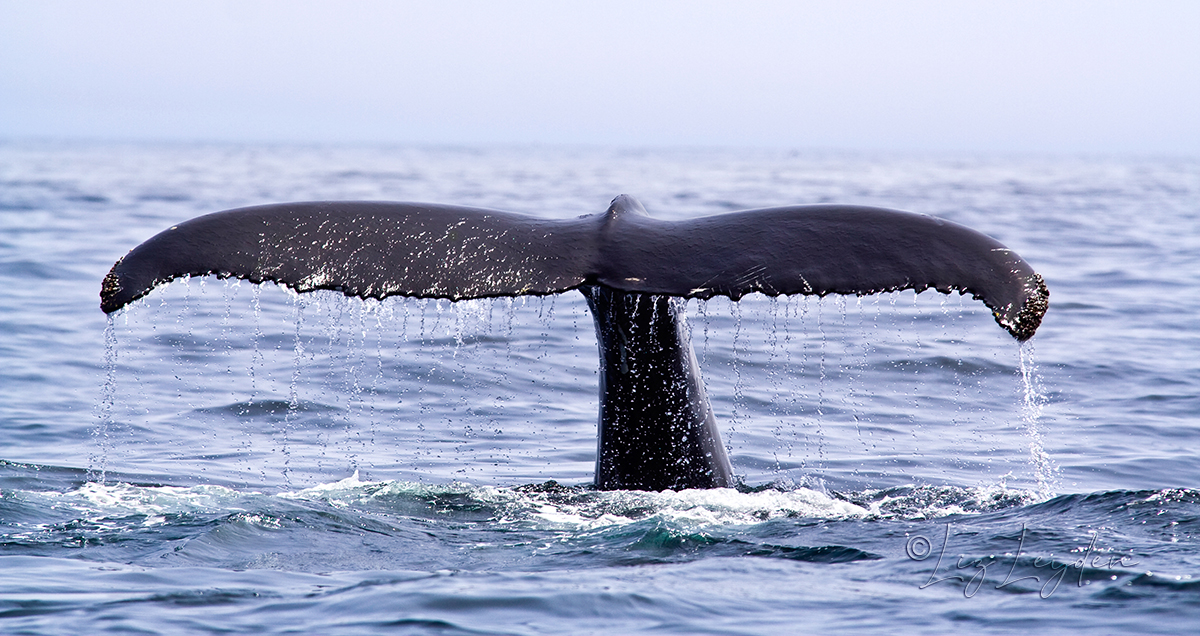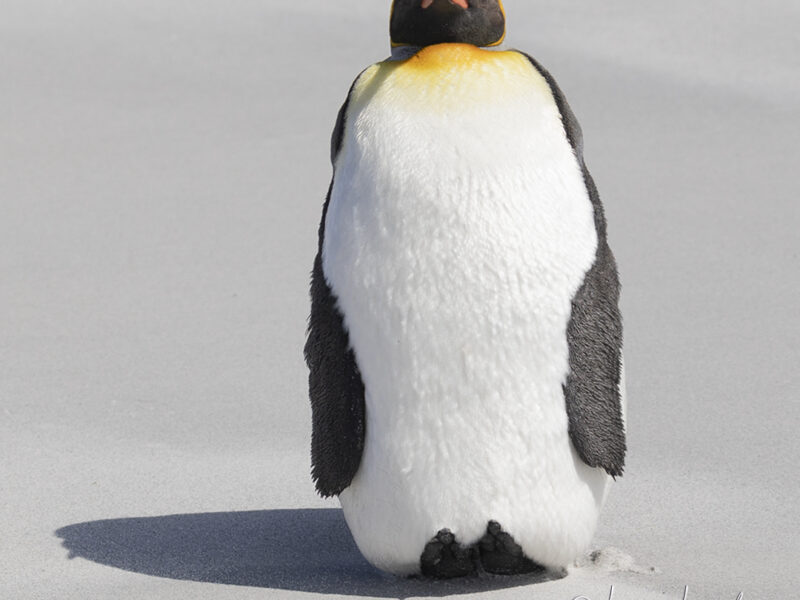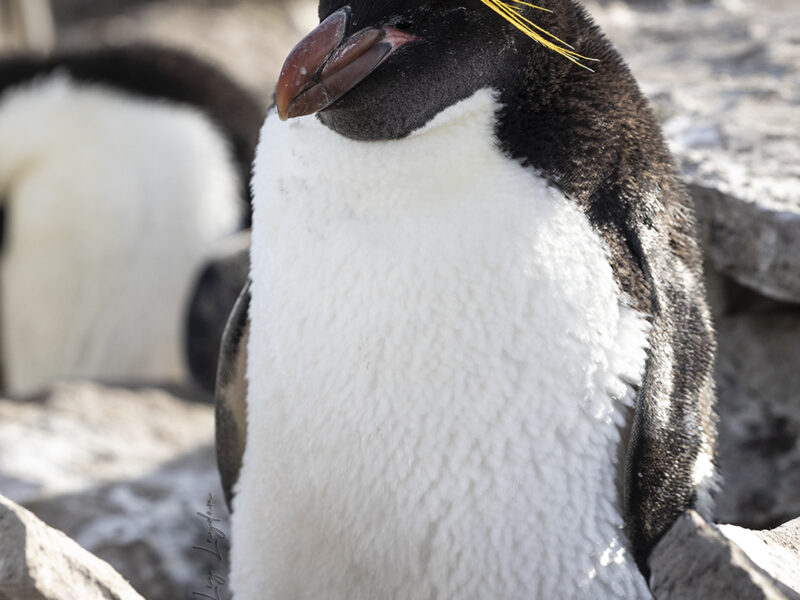The tail fluke of a Humpback Whale, Megaptera novaeangliae being raised prior to a deep dive in Witless Bay, Newfoundland, Canada.
As I said in a previous post, I was very lucky to be in Newfoundland during the main Capelin ‘run’ or ‘roll’, which can be from mid-June to early August. Capelin are small fish which arrive in their tens of thousands to spawn in the many bays of Newfoundland and Labrador. The females swim right up to the gravel beaches, lay their eggs, and the males follow immediately afterwards to fertilise them.
In their turn, the vast numbers of Capelin attract predators such as Whales, Seals, Cod, Mackerel, Squid and various seabirds. When I was there, in Trinity Bay alone there were many Humpback Whales as well as some Minke Whales – which also feed on Capelin – and a Sperm Whale, which may have been attracted by Squid which in turn were feeding on Capelin.
The tail flukes of Humpback Whales are lifted right out of the water when they deep-dive. These tail flukes are of different colours and patterns, and most have distinct scars. The tail flukes therefore allow individual whales to be identified. Various catalogues of photos of individuals are kept. The photographic catalogue of all known North Atlantic Humpback Whales is maintained by the College of the Atlantic in Maine, US.
This photo is copyright © Liz Leyden, all rights reserved.
It is for sale as wall art or as various home or personal accessories at Pixels.com.
My photo of a Humpback Whale’s Tail Fluke is also available to purchase as a stock photo from iStock.


